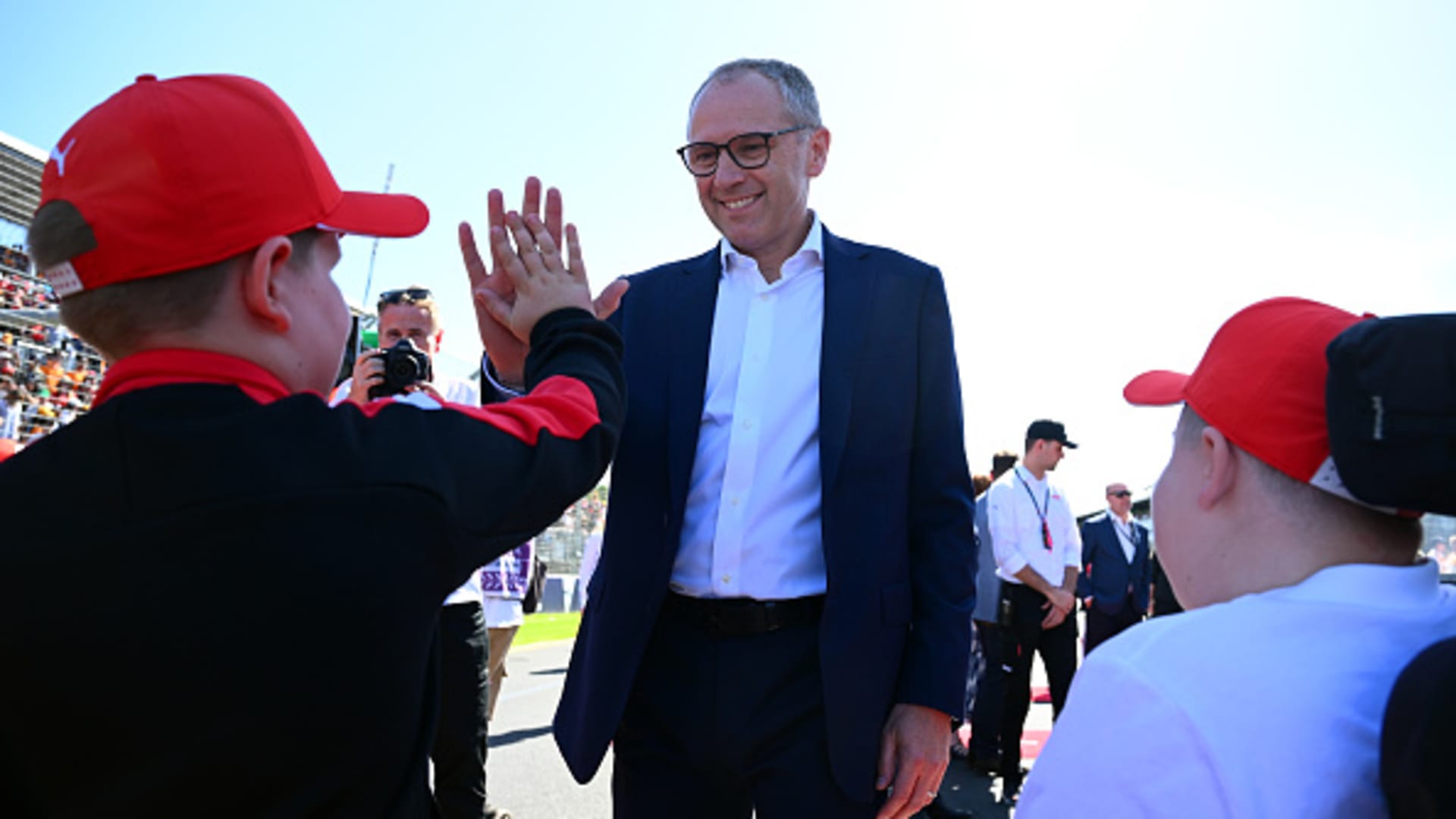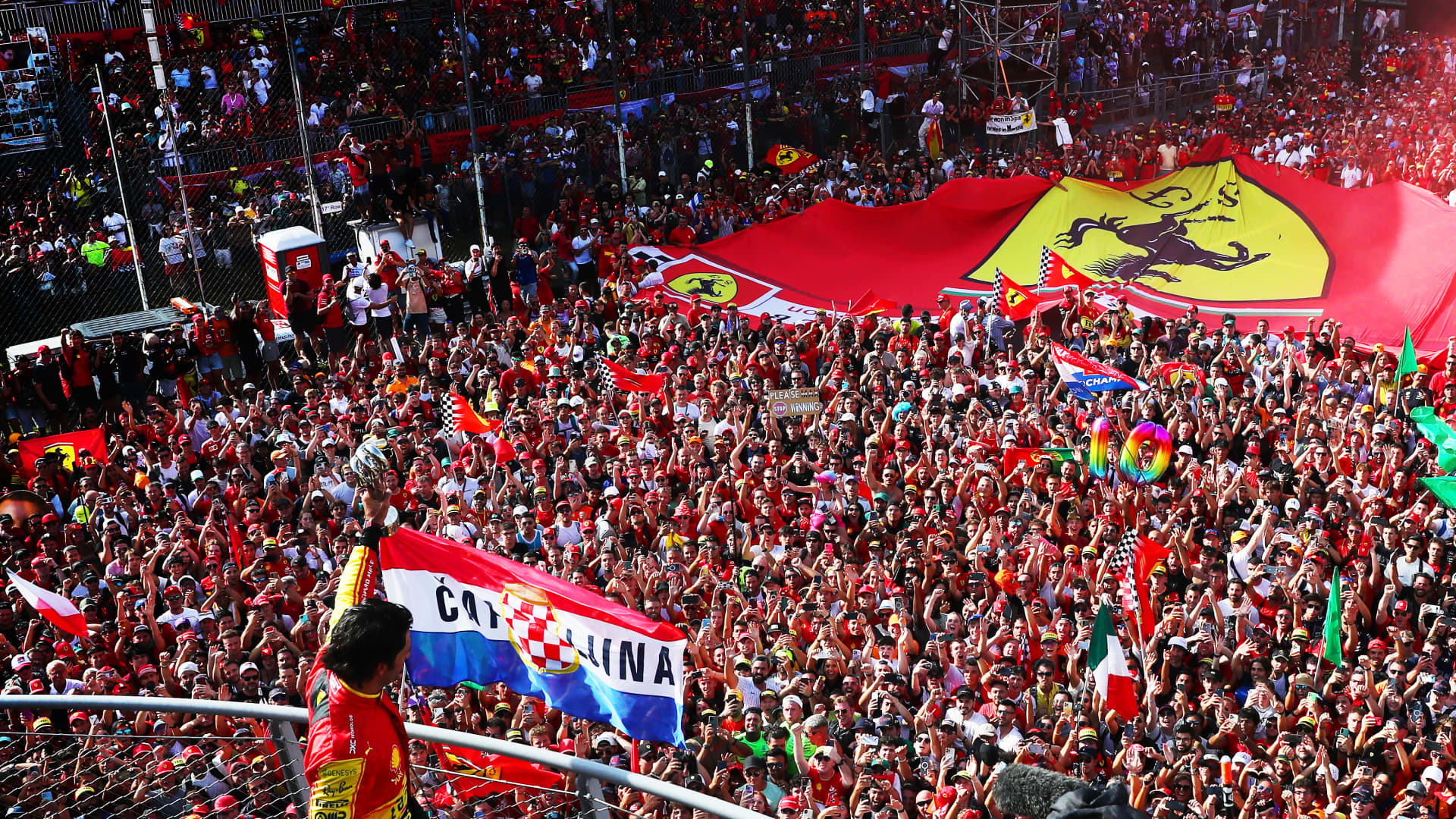
- Shifting the Suzuka Circuit from its traditional October booking to April is part of F1's strategy of regionalizing the racing calendar into four blocks.
- The sport has an overarching sustainability strategy that includes sustainable fuels, remote broadcast operations and renewable energy.
- It's looking to cut emissions by a minimum of 50%, based on its 2018 baseline.
- Mercedes has already pledged millions of euros to fund research into so-called sustainable aviation fuels, which it says will cut its aviation footprint roughly in half.
- Meanwhile, new regulations mandating cars will need to run on 100% sustainable "drop-in" fuels by 2026 are forcing teams to invest more heavily in eco-engineering.
LONDON — To any reasonable observer, Formula One's increase in the number of races in its calendar seems at odds with the sport's pledge to be net zero by 2030.
But with the Japanese Grand Prix this coming weekend, F1's boss Stefano Domenicali will finally be able to provide a rebuttal.
Shifting the Suzuka Circuit from its traditional October booking to April is part of F1's strategy of regionalizing the racing calendar into four geographical blocks, reducing the distance teams have to travel between events and opening up weeks where new races can slot in.
Get Tri-state area news delivered to your inbox.> Sign up for NBC New York's News Headlines newsletter.
More broadly, the sport has an overarching sustainability strategy that includes sustainable fuels, remote broadcast operations and renewable energy. It's looking to cut emissions by a minimum of 50%, based on its 2018 baseline. "When you think about F1, you think about speed, you think about innovation, you think about efficiency. And these are exactly the ingredients we need to deliver in terms of sustainability," Ellen Jones, the head of sustainability at F1, told CNBC.
In theory, tight regional schedules and breakthroughs in sustainable aviation fuels make this a plausible carbon reduction strategy. But executing it will require Domenicali to perform some advanced logistical juggling. Not only must he balance the competing interests of at least 21 different countries, but also cut the sport's total carbon footprint (estimated at around 256,000 metric tons in 2019) by more than 50%.
What makes this feat of organizational dexterity even more sensational is that it must be performed while balanced on an increasingly uneven political landscape. Spa (Belgium), Monza (Italy), and Monaco are among the European circuits which have yet to receive contract extensions beyond 2025, while deep-pocketed nations such as the United Arab Emirates and Saudi Arabia have inked deals which will keep them on the calendar until 2030.
Money Report
F1's growing ambitions in the Middle East and the U.S. have at times transcended the sport. On May 31, 2023, the Belgian Prime Minister Alexander De Croo sent a letter to Domenicali, stating that "the need for you to set up a balanced calendar between Europe, the Far East and America/Middle East will not happen to the detriment of Belgium," pointing out that the local government had made "numerous financial investments" to keep the Circuit de Spa-Francorchamps on the calendar.
But there are investments and then there are investments, and in March, Domenicali hinted that instead of longer-term contracts, Europe's legacy tracks would be "rotated" annually, reportedly telling journalists that he was "discussing with other promoters in Europe to do something that will be announced soon."

This lack of clarity might make it harder for many of these circuits to reach their own emissions targets, however.
"Without a long term contract with F1 it's really hard to invest in sustainability initiatives because the [Grand Prixs] make up such a big part of your revenue," Stephane Bazire, head of business sustainability at Silverstone, told CNBC. Silverstone is one of Europe's three legacy circuits to have received a contract extension to 2030 (alongside Austria's Red Bull Ring and Hungary's Hungaroring), as F1 looks to free up space for big city races.
This shift away from purpose-built tracks such as Spa in favor of city tracks creates its own sustainability challenges, however. "City races might bring the sport to a new location, where people can access the track by public transport but how many of the fans that went to Las Vegas or Singapore are local?" asked Bazire.
The answer, it seems, is not many. Las Vegas airports dealt with 400 private jets arriving for the Grand Prix, while Singapore saw a 63% increase in September flight arrivals compared to the previous year when its Grand Prix was pushed into October.
With this influx of fans comes more revenue which in turn gives these locations the budgets to veto any calendar negotiations. The reported $35 million hosting fee Singapore paid in 2023, for example, gives it greater sway than locations such as Japan which only paid $25 million.
"I've told Stefano I don't want that change to happen," said Singapore Grand Prix Vice President Colin Syn when it was pointed out that moving Singapore, rather than Japan to April would make more sense given their respective climates. "We've had the race in late September since 2008 [and] this has created a routine for those who come and watch the race and if we change it we may lose some of our more regular ticket buyers."
It is Japan, therefore, that has given up its race position in the 2024 calendar. And others are under pressure to follow suit. F1's Jones told CNBC that the organization needs to make these changes across the calendar "and we'll continue to do that in negotiation with our promoters, the weather, and also looking at when public holidays land."
Attempts to shift the Canadian Grand Prix from its traditional June spot to coincide with one of the three U.S. races have also been fought off by Canadian GP President Francois Dumontier who suggested moving the race back in the calendar would bring weather conditions into play.
Instead, teams must travel from Miami in May to Monaco and then on to Italy's Emilia Romagna Grand Prix before turning around and heading back across to Canada in June.
On whether short-term contracts can put pressure on promoters to invest in sustainability, Jones said that the organization was asking the same things for each circuit, such as fan travel, energy and recycling.
"You see that expressed in different ways across our promoters, whether you are in Bahrain, looking at solar panels, whether or not you are in the Netherlands, looking at the use of biofuels, such as HVO, or you're in Silverstone, looking at a mixture of all three on site generation green power grids, as well as biofuels in the generators," she told CNBC.
Time to look elsewhere?
Even if Domenicali was able to find a way to pull off the new strategy however, some believe "regionalization" is unlikely to be the silver-bullet F1 needs to reach its sustainability goals.
"Separating the calendar into blocks ignores the fact that the majority of teams need to do repairs and get parts from their main garage somewhere in the world." explained Madeleine Orr, an expert in sport ecology.
"By packing more races into the schedule you're forcing teams into the air to fetch parts or make repairs in time."
The Williams F1 team found this out the hard way after a huge crash in Australia forced them to send one of its two cars on a 16,500-mile trip to the U.K. for fixing before flying it back out to Japan in time for the next race.
There is no easy fix. "Teams need the cars and equipment they had at the last race so that their data is consistent," Paul Fowler, head of DHL motorsports logistics, told CNBC.
"There is talk of us having super warehouses at four points in the world that teams could utilize, but that's an ongoing discussion."

As these discussions drag out, F1 will need to look for other ways to reach its targets. Instead of waiting for this emissions-free calendar to materialize, teams are rightly turning to engineering solutions — something F1 is more adept at.
Mercedes has already pledged millions of euros to fund research into so-called sustainable aviation fuels, which it says will cut its aviation footprint roughly in half. Meanwhile, new regulations mandating cars will need to run on 100% sustainable "drop-in" fuels by 2026 are forcing teams to invest more heavily in eco-engineering.
As the chances of reaching its sustainability targets look more challenging, Domenicali will have little choice but to hit the accelerator. As Madeleine Orr points out, "if there is an industry that could pull this off at the last minute with some miracle tech it's F1."
— CNBC's "Inside Track: The Business of Formula 1" provides insight into the world's most elite motorsports league. Stay tuned for much more.
Correction: This story has been updated with the correct acronym for the biofuel HVO.






